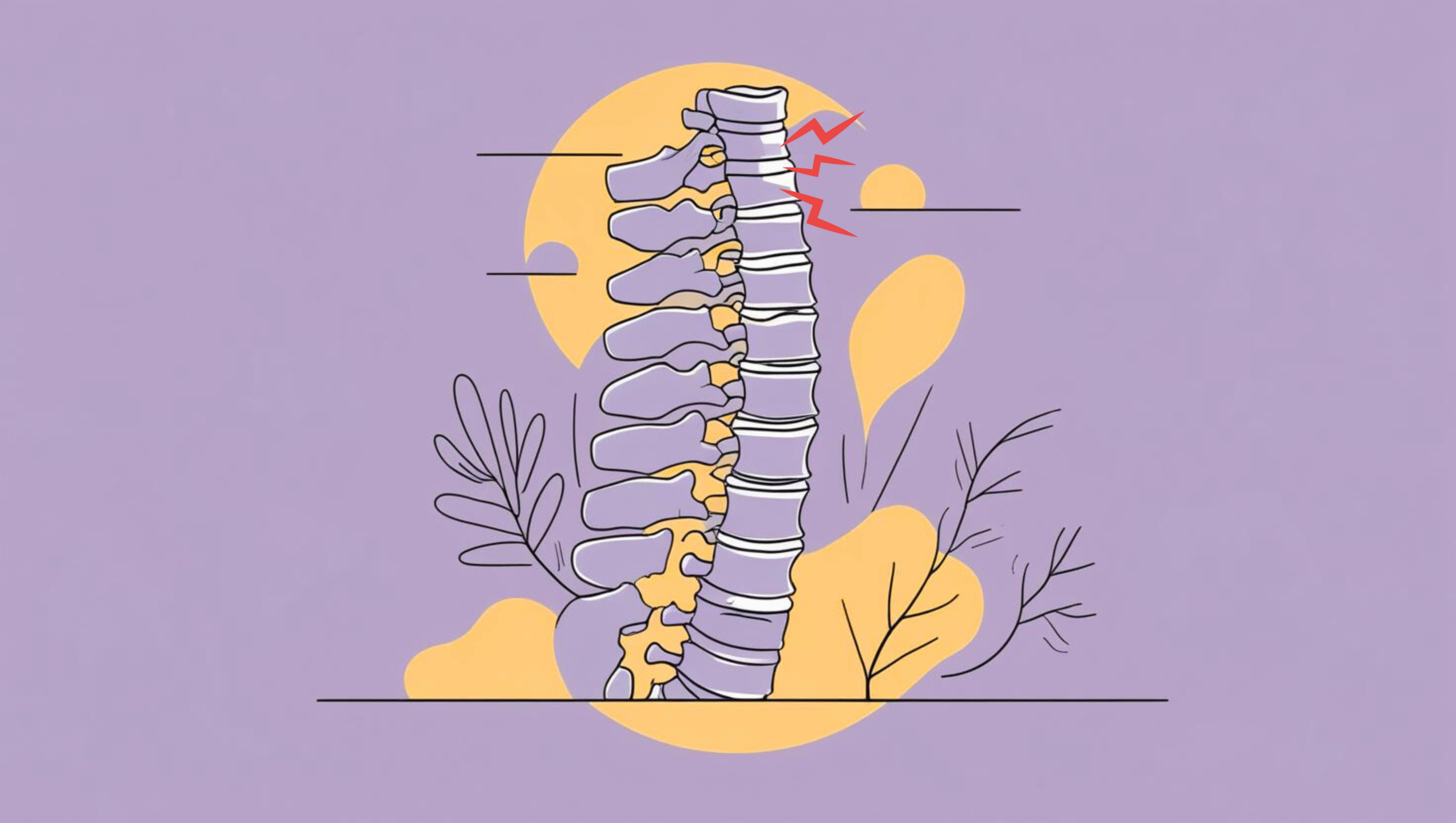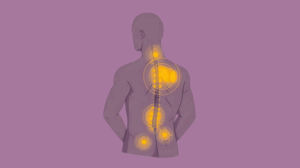Have you ever felt a sudden sharp back pain that brought you to a standstill? That could be spinal instability. While chronic back pain has many causes, instability of the spine is a key contributor. This article explains what spinal instability is, how it causes chronic pain, associated conditions, symptoms, and effective treatment strategies.
What Is Spinal Instability?
Spinal instability refers to excessive or abnormal movement between the vertebrae, which compromises the spine’s ability to stay properly aligned and stable. With age or injury, the spine’s structural elements vertebrae, discs, ligaments, and muscular support can weaken, leading to instability and pain.
How Instability Develops
- Degenerative Changes: Wear and tear of intervertebral discs and facet joints weaken spinal support
- Ligament Laxity: Ligament weakening (e.g., in capsular ligaments) allows abnormal vertebral motion
- Muscle Weakness: Atrophy of stabilizing muscles like multifidus and transverse abdominals worsens instability
- Trauma or Surgical Changes: Injury or previous surgery can alter spinal mechanics leading to instability
How Spinal Instability Causes Chronic Back Pain
As instability increases, vertebrae may slip or move mechanically, causing:
- Nerve Compression: Abnormal motion irritates spinal nerves, producing sharp pain, numbness, or leg weakness
- Disc Degeneration: Accelerated disc wear reduces shock absorption and increases bone friction
- Muscular Strain and Alignment Issues: Unstable alignment causes compensatory muscle tension and stiffness
Related Conditions Linked to Instability
Spondylolisthesis
This condition involves forward slipping of a vertebra (commonly in lumbar region), leading to nerve compression and mobility issues. It’s considered “unstable” if movement exceeds 4 mm or 10° angle change.
Osteoporosis & Vertebral Fractures
Weakened bones (due to osteoporosis) increase fracture risk, contributing to spinal instability and severe pain.
Disc Collapse / Degenerative Disc Disease
Loss of disc height from degeneration reduces vertebral support and increases motion, worsening instability.
Degenerative Bone Disease
Arthritic or degenerative changes in vertebrae and facet joints foster misalignment and instability.
Symptoms of Spinal Instability
Common signs include:
- Chronic lower back ache that worsens with activity or static posture (standing, sitting)
- Sharp, deep pain during movement or bending
- Radiating pain, numbness, tingling, or muscle weakness in legs due to nerve compression
- Difficulty walking, stiffness, reduced mobility, and occasionally bladder/bowel issues in advanced cases
- Impact on daily tasks, sleep disturbance, and fear of movement due to symptom unpredictability
Diagnosis: How Is It Identified?
- Clinical evaluation: Includes history, physical examination, posture assessment, hamstring tightness, and neurological screening
- Imaging:
- Plain X‑rays with flexion-extension views detect dynamic instability.
- MRI/CT scans assess disc degeneration, nerve compression, and spinal alignment.
Managing Spinal Instability
Conservative Approaches
Physiotherapy and Stabilization Exercise
Tailored exercise programs targeting deep spinal stabilizers (multifidus, transverse abdominals) help restore control, reduce pain, and improve balance. Studies show such programs reduce pain and enhance function.
Bracing
A short-term lumbar brace combined with exercise may reduce vertebral shift and improve neuromotor control. Combined therapy showed reduced medication needs and pain.
Pain Control Strategies
- NSAIDs for inflammation and pain relief
- Epidural steroid injections or medial branch nerve blocks in cases of radicular pain
- Electrical muscle stimulation (TENS) may assist with muscle activation and circulation, though evidence is mixed
Exercise Techniques
- Motor control exercises: Focus on retraining stable movement patterns (preferred over generic stretching)
- Directional preference exercises (e.g. McKenzie): Useful in selecting movements that centralize pain, particularly helpful in chronic back pain
- Manual therapy techniques: Mobilizations like SNAGS may improve joint mobility and reduce pain when combined with exercise
Surgical Intervention
When conservative treatment fails or neurological deficits progress:
- Spinal fusion: To stabilize slipped or unstable segments and reduce vertebral motion.
- Decompression procedures: May accompany fusion when nerve structures are compressed.
Rehabilitation Exercise Plan (Sample Outline)
- Core Stabilization
- Pelvic tilts, abdominal bracing, and bird-dog variations
- Pelvic tilts, abdominal bracing, and bird-dog variations
- Lumbar Multifidus Activation
- Address deep muscle activation in static holding and functional tasks
- Address deep muscle activation in static holding and functional tasks
- Flexibility Work
- Gentle hamstring and hip flexor stretches
- Gentle hamstring and hip flexor stretches
- Postural Correction
- Scapular retraction, pelvic neutral alignment, ergonomic guidance
- Scapular retraction, pelvic neutral alignment, ergonomic guidance
- Gradual Return to Activity
- Monitor pain during movement, avoid flexion/extension extremes if aggravated
- Monitor pain during movement, avoid flexion/extension extremes if aggravated
Prevention & Lifestyle Tips
- Maintain healthy weight to reduce spinal load
- Avoid repetitive bending, twisting, and heavy lifting without proper support
- Strengthen abdominal and back muscles regularly
- Practice ergonomic habits: good sitting posture, proper lifting techniques
- Proactively manage osteoporosis risk with diet, exercise, and screening.
Conclusion
Spinal instability is a significant but treatable cause of chronic back pain. Early recognition, guided rehabilitation, and conservative treatments can restore spinal stability, alleviate pain, and help you regain function. In advanced cases or when neurological symptoms are present, surgical stabilization may be necessary.
If you experience symptoms of instability, sharp pain, leg numbness, or frequent episodes of immobility, consulting a healthcare provider for assessment is essential.
References
- Cooper, C., & O’Neill, T. W. (2015). The aging spine and its effects on spinal stability. Osteoporosis International, 26(8), 2155–2162.
- Takahashi, M., & Nakamura, T. (2016). Spinal instability and its role in back pain. Journal of Orthopedic Surgery and Research, 11(6), 116–121.
- Sato, T., & Nakanishi, K. (2017). The biomechanics of spinal instability: A comprehensive review. Spine Journal, 42(4), 385–390.
- Wu, X., & Lee, H. (2018). Role of spinal instability in chronic lower back pain. Journal of Pain Research, 36(9), 105–110.
- He, D., & Zhang, Y. (2019). Spondylolisthesis: The role of spinal instability in back pain. Spine Health Journal, 45(3), 152–157.
- Flahive, J., & Miller, L. (2017). Osteoporosis and spinal fractures in the aging population. Osteoporosis International, 31(5), 112–119.
- Hayashi, H., & Tsuchiya, K. (2016). Disk collapse and its impact on spinal instability. Spine Journal, 31(12), 815–820.
- Saeed, M., & Waseem, R. (2020). Degenerative bone disease and spinal instability. Clinical Orthopedics and Related Research, 50(2), 48–54.
- Patel, R., & Joshi, R. (2019). Spinal fractures: A key factor in spinal instability. Journal of Neurosurgery, 40(1), 115–120.
- Kumar, R., & Sahai, A. (2018). The clinical presentation of spinal instability: A study of symptoms. Journal of Spine Research, 15(5), 45–50.
- Zhao, J., & Li, X. (2017). The impact of spinal instability on mobility and function. Journal of Orthopedic Medicine, 38(8), 213–218.























